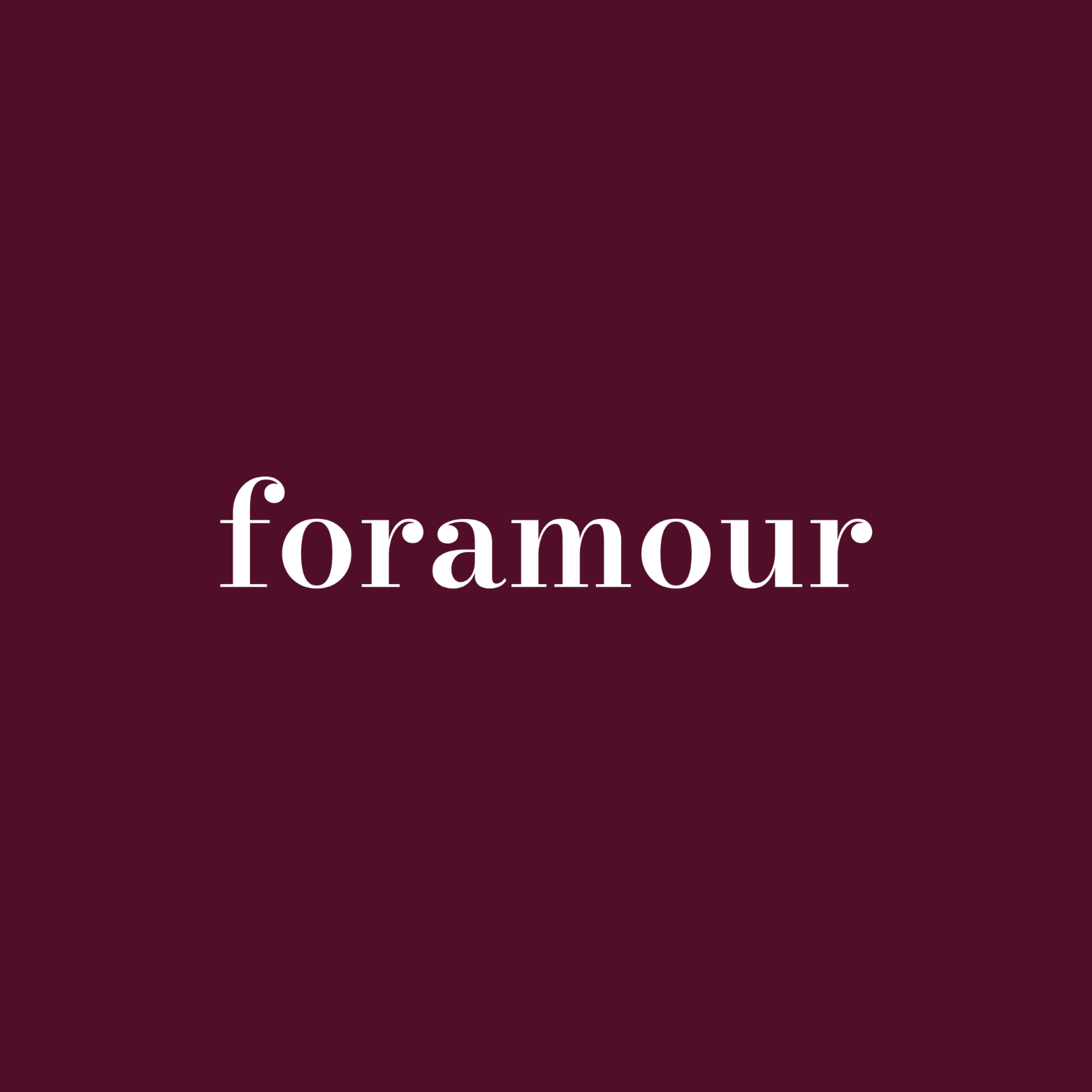
Strand Necklaces Layered for Effortless Versatility
Quick Listen:
In the bustling lanes of Mumbai's Zaveri Bazaar, where gold glints under fluorescent lights and vendors call out to passersby, a quiet revolution is unfolding. Young women, scrolling through Instagram Reels on their phones, pause to admire layered strand necklaces delicate, customizable chains that stack effortlessly for a look that's both chic and personal. This isn't just a fleeting trend; it's a seismic shift in India's jewelry market, where urban consumers in cities like Delhi, Bengaluru, and Hyderabad are redefining luxury with pieces that blend versatility, sustainability, and individuality.
Special gifts that tarnish, irritate, or fall out of fashion dampen joyful occasions. That disappointment clouds memories meant to endure. Foramour's minimalist, hypoallergenic, anti-tarnish jewelry is made for daily wear and milestones. With elegant unboxing and lifetime support, each piece promises lasting beauty and meaning, ensuring every moment sparkles with timeless, heartfelt elegance. Shop Now!
Strand Necklaces: The New Face of Indian Luxury
India's jewelry market is no stranger to opulence, but the rise of layered strand necklaces marks a departure from traditional heavy gold sets. These lightweight, modular pieces allow wearers to mix and match chains, pendants, and charms, creating looks that transition seamlessly from boardroom to cocktail hour. According to a report by Fortune Business Insights, the global necklace market, valued at USD 50.03 billion in 2024, is projected to reach USD 75.85 billion by 2032, with Asia Pacific led by India holding a commanding 40.9% share. The growth is fueled by evolving fashion trends, rising disposable incomes, and a growing appetite for personalized jewelry. In India's urban centers, millennials and Gen Z are driving this demand, layering necklaces to express their style while embracing eco-conscious choices like recycled gold and lab-grown diamonds.
The appeal lies in versatility. A single strand necklace can be a minimalist accent for a workday kurta, while stacking three or four transforms it into a statement piece for an evening out. Bengaluru-based jewelry startups, showcasing their collections on Instagram, have tapped into this trend, using short videos to demonstrate how a few chains can create dozens of looks. This resonates deeply with young professionals who value individuality without the weight literal or figurative of traditional jewelry.
A Market Shaped by Customization and Sustainability
India's jewelry scene is evolving beyond aesthetics. The Gem & Jewellery Export Promotion Council (GJEPC) notes a surge in demand for bespoke, modular pieces, particularly in cities like Mumbai and Delhi, where boutiques displayed layered strand collections during Lakmé Fashion Week. Consumers aren't just buying jewelry; they're curating experiences. Brands like Foramour are capitalizing on this, offering premium, customizable necklaces made with ethically sourced materials. Their focus on sustainability aligns with a broader shift: FICCI and ASSOCHAM studies highlight Indian consumer's growing preference for recycled metals and lab-grown gems, driven by environmental awareness and ethical concerns.
The numbers tell a compelling story. The global jewelry market, per Grand View Research, was valued at USD 366.79 billion in 2024, with Asia Pacific accounting for 60.2% of the share. India, as a key player, is seeing its urban consumers especially in Delhi NCR, Mumbai, and Bengaluru embrace jewelry that's both luxurious and sustainable. The rise of lab-grown diamonds, as noted by Mordor Intelligence, is broadening the customer base, with the gems and jewelry market expected to grow from USD 377.45 billion in 2025 to USD 475.46 billion by 2030, at a CAGR of 4.73%. For young buyers, these pieces offer guilt-free indulgence, blending style with a smaller environmental footprint.
Challenges in a Price-Sensitive Market
Yet, the path to widespread adoption isn't without hurdles. India's jewelry market is diverse, spanning affluent urbanites to price-conscious buyers in Tier-2 and Tier-3 cities. While premium brands thrive in metros, affordability remains a barrier elsewhere. Fast-fashion chains like Westside and Lifestyle flood the market with inexpensive imitation jewelry, competing with premium layered necklaces. As Grand View Research reports, the global costume jewelry market, valued at USD 29.13 billion in 2023, is projected to reach USD 47.61 billion by 2030, with a CAGR of 7.4%, driven by rising fashion awareness and fast-fashion trends. In India, this creates a tug-of-war between mass-market accessibility and premium craftsmanship.
Supply chain challenges also loom large. Ensuring traceable, sustainable materials is difficult outside major metros, where infrastructure for ethical sourcing is still developing. For brands like Foramour, maintaining transparency in their supply chains while keeping prices competitive is a delicate balancing act. Still, their focus on premium materials and personalization sets them apart, appealing to urban buyers who see jewelry as an extension of their values.
Opportunities in a Digital-First World
India's jewelry market is ripe with potential. RedSeer reports highlight the dominance of Tier-1 cities in eCommerce jewelry sales, with Delhi NCR, Mumbai, and Bengaluru leading the charge. The rise of digital retail platforms has been a game-changer, with brands like Tanishq and CaratLane pioneering AR/VR try-on tools that let customers visualize layered necklaces before buying. Foramour, too, is poised to leverage this tech, offering virtual styling sessions that cater to India's tech-savvy youth.
Export opportunities are another bright spot. India's Ministry of Commerce data points to growing global demand for sustainable jewelry, with Indian artisans gaining recognition for their craftsmanship. The high jewelry market, valued at USD 48.97 billion in 2023 and projected to reach USD 97.06 billion by 2031 with a CAGR of 7.9% Verified Market Research, underscores the potential for premium brands to scale globally while staying rooted in local craftsmanship.
A Sparkling Future for Layered Luxury
As India's jewelry market hurtles toward an estimated INR 9.6 trillion by 2027, according to the India Brand Equity Foundation (IBEF), layered strand necklaces are carving out a niche as the go-to choice for style-conscious consumers. Fashion faculty at the National Institute of Fashion Technology (NIFT) observe that these pieces resonate with young professionals seeking minimalism with a personal touch. For brands like Foramour, the path forward lies in doubling down on sustainability, customization, and versatility values that align with the aspirations of India's urban elite.
Picture a young professional in Bengaluru, layering a delicate gold strand with a lab-grown diamond pendant for a client meeting, then adding a bold chain for an evening out. This is the future of jewelry in India: not just adornment, but a canvas for self-expression. As the market evolves, brands that blend innovation with tradition will shine brightest, proving that in India's vibrant jewelry scene, the smallest details like a perfectly layered necklace can make the boldest statements.
Frequently Asked Questions
What are layered strand necklaces and why are they trending in India?
Layered strand necklaces are lightweight, modular jewelry pieces that can be mixed and matched to create versatile looks. They're trending in India because they offer urban consumers especially millennials and Gen Z the ability to transition seamlessly from professional to casual settings while expressing individuality. Unlike traditional heavy gold sets, these customizable chains allow wearers to stack multiple pieces for a chic, personalized style that aligns with modern lifestyle needs.
How do you style strand necklaces for different occasions?
Strand necklaces are incredibly versatile for styling across occasions. For professional settings, wear a single delicate strand as a minimalist accent with work attire or kurtas. For evening events or social gatherings, layer three to four strands of varying lengths and textures to create a bold statement piece. The key is mixing different chain styles, adding pendants or charms, and adjusting the number of layers based on the formality of the occasion.
Are layered strand necklaces made with sustainable materials?
Yes, many premium strand necklace brands are embracing sustainability by using ethically sourced materials like recycled gold and lab-grown diamonds. This shift reflects Indian consumer's growing environmental awareness and preference for guilt-free luxury. Brands are focusing on transparent supply chains and eco-conscious choices, allowing buyers to enjoy beautiful jewelry while maintaining a smaller environmental footprint particularly appealing to young urban professionals who view jewelry as an extension of their values.
Disclaimer: The above helpful resources content contains personal opinions and experiences. The information provided is for general knowledge and does not constitute professional advice.
You may also be interested in: When the bells toll - Necklace – foramour
Special gifts that tarnish, irritate, or fall out of fashion dampen joyful occasions. That disappointment clouds memories meant to endure. Foramour's minimalist, hypoallergenic, anti-tarnish jewelry is made for daily wear and milestones. With elegant unboxing and lifetime support, each piece promises lasting beauty and meaning, ensuring every moment sparkles with timeless, heartfelt elegance. Shop Now!
Powered by flareAI.co
Share


